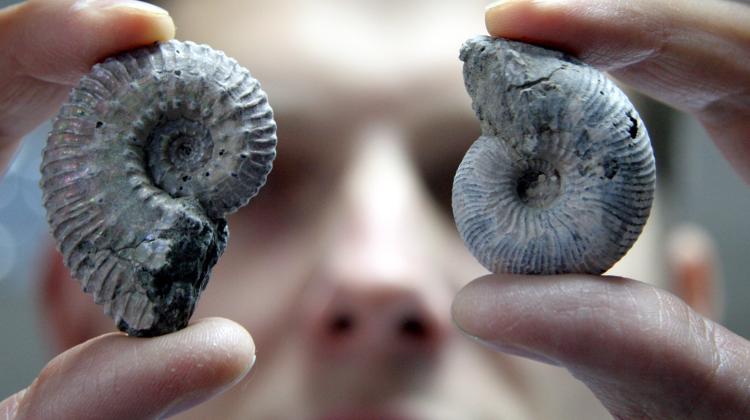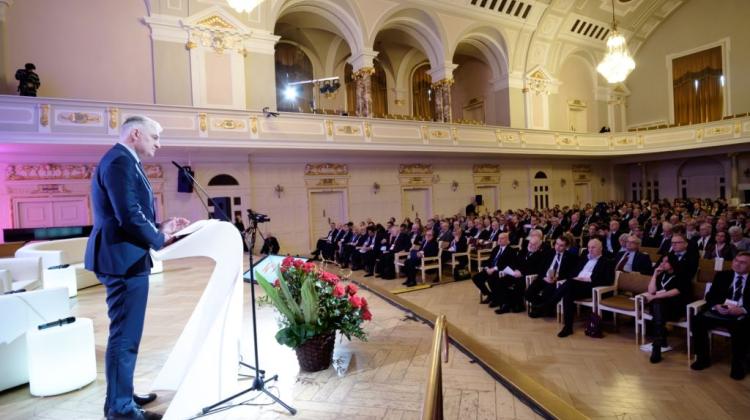Tomb of a princess in a barrow
Rich grave of a woman buried deep in the mound has been discovered by archaeologists from the Institute of Prehistory, Adam Mickiewicz University in Poznań during excavations in the Piła poviat (Wielkopolska). They refer to their find as "the princess tomb".
Inside the mound was a single burial of a woman - representatives of the Wielbark culture. Based on the ornaments, which were placed in the grave with the deceased, the tomb was preliminarily dated to the second half of the 2nd century AD. The skeleton has not been preserved very well, but it is known that the woman was laid on the back.
"There are many indications that it was a rich woman, perhaps a representative of the local aristocracy" - told PAP said Prof. Andrzej Michałowski from the Institute of Prehistory, Adam Mickiewicz University in Poznań, who supervises the excavations.
On the hands of the deceased archaeologists found metal bracelets. They also discovered clips to fasten clothing, belt buckle and bone beads. Similar items are known from other rich graves of the community.
The cluster of mounds was located in January 2015 during the analysis of images made available on a website with satellite images.
"Until now we were unaware of the existence of this archaeological site. The purpose of the ongoing excavations was to confirm whether the mounds visible in photographs were actually man-made" - explained Romualda Bartkowiak from Piła Branch of the Regional Office for the Protection of Monuments in Poznań. Bartkowiak added that excavations had confirmed the historical value of the place. Now the provincial conservation officer intends to cover the mounds with special protection - enter them into the register of monuments.
The cluster of mounds consists of seven mounds. Archaeologists decided to study the smallest of them, adjacent to the other six. The mound measures approx. 1.5 m in height and 12 m in diameter. It was made entirely of soil.
"It appears that this is not a typical cemetery of the community, because in other places the mounds are always accompanied by flat graves, which we have not yet been able to locate here yet, but I hope that it is all still before us, the site hides many more unusual secrets" - added Prof. Michałowski.
Archaeologists do not know who the buried woman was, and who was buried in the adjacent mounds. They propose several versions.
"Perhaps the woman was the wife of a man buried in one of the other mounds, or buried in the mounds were warriors who were supposed to guard their princess in the afterlife" - said Prof. Michałowski.
At the edge of the structure lay knocked down stone stele. "It was a stone monument, which was processed before setting by the mound. In a pit nearby we found traces of stonemason\'s work in the form of stone flakes" - added Prof. Michałowski. The stone weighs over half a ton and measures approx. one meter in height.
According to scientists, representatives of the Wielbark culture were under the influence of the Goths, who came to the area of today\'s Poland approx. 2 thousand years ago from Scandinavia. As a result of the conquest of local tribes, a new hierarchical social structure crystallized with the elite standing at the helm. The presence of Germans on the Vistula is confirmed in the written sources, including Getica by the Latin chronicler Jordanes, from the 6th century AD.
"Only specialized research would allow to verify whether the woman buried in the grave came from Scandinavia, or belonged to the local community, influenced by the aristocracy from the north" - concluded Prof. Michałowski.
The excavations were possible thanks to the financial, logistical and organizational support provided to archaeologists by the State Forests.
PAP - Science and Scholarship in Poland, Szymon Zdziebłowski
szz/ mrt/
tr. RL
Przed dodaniem komentarza prosimy o zapoznanie z Regulaminem forum serwisu Nauka w Polsce.


















